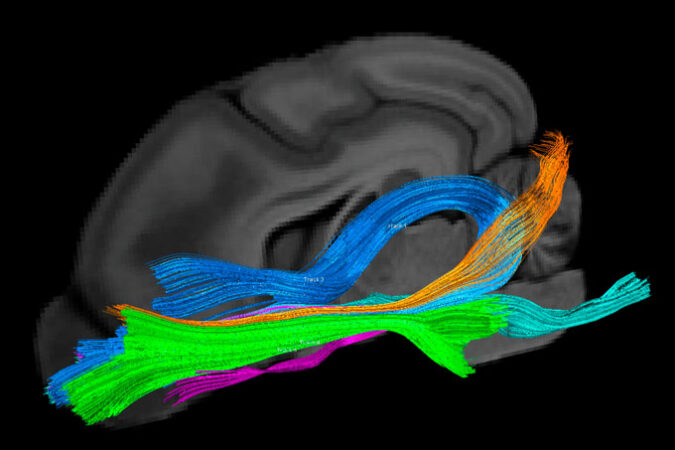This post was originally published on this site
A dog’s brain is wired for smell. Now, a new map shows just how extensive that wiring is.
Powerful nerve connections link the dog nose to wide swaths of the brain, researchers report July 11 in the Journal of Neuroscience. One of these canine connections, a hefty link between areas that handle smell and vision, hasn’t been seen before in any species, including humans.
The results offer a first-of-its-kind anatomical description of how dogs “see” the world with their noses. The new brain map is “awesome, foundational work,” says Eileen Jenkins, a retired army veterinarian and expert on working dogs. “To say that they have all these same connections that we have in humans, and then some more, it’s going to revolutionize how we understand cognition in dogs.”
In some ways, the results aren’t surprising, says Pip Johnson, a veterinary radiologist and neuroimaging expert at Cornell University College of Veterinary Medicine. Dogs are superb sniffers. Their noses hold between 200 million and 1 billion odor molecule sensors, compared with the 5 million receptors estimated to dwell in a human nose. And dogs’ olfactory bulbs can be up to 30 times larger than people’s. But Johnson wanted to know how smell information wafts to brain regions beyond the obvious sniffing equipment.
To build the map, Johnson and colleagues performed MRI scans on 20 mixed-breed dogs and three beagles. The subjects all had long noses and medium heads, and were all probably decent sniffers. Researchers then identified tracts of white matter fibers that carry signals between brain regions. A method called diffusion tensor imaging, which relies on the movement of water molecules along tissue, revealed the underlying tracts, which Johnson likens to the brain’s “road network.”
After odor information enters the nose, it whizzes to the olfactory bulb, a brain structure that sits behind the dogs’ eyes. But from there, it wasn’t clear where the signals went next. When Johnson looked for the tracts in the dog MRI data, she was blown away. “I just kept finding these huge pathways,” she says. “They seem like information freeways running from the nose back into the brain.”
This new dog brain map contains some familiar roads, including those that connect the olfactory bulb to brain areas associated with memories and emotions. In people, those roads explain why a whiff of perfume can transport a person back in time.
But one tract was totally new. This road, thick and obvious, connected the olfactory bulb to the occipital lobe, the part of the dog brain that handles vision. “There have been lots of people who theorized that this connection existed, based on the behavior of trained dogs and detection dogs,” says Jenkins, who currently practices at Huntsville Veterinary Specialists & Emergency in Alabama and who was not involved in this study. “But nobody has been able to prove it. This is fabulous.”
Dogs use all their senses to evaluate their environment. But this newfound connection between smell and sight suggests that the two are intricately linked. Perhaps this anatomical link could be why smell can often compensate when a dog’s sight goes, Johnson says. “Blind dogs can still play fetch.”
Breeding can affect the shapes of dog brains, neuroscientist Erin Hecht of Harvard University and colleagues have found (SN: 9/2/19). It would be interesting to see how these olfactory tracts look in different dog breeds, including scent hounds bred and trained for jobs such as hunting, finding disaster survivors or identifying diseases like cancer or COVID-19, Hecht says (SN: 6/1/22). “This study lays a foundation for future work,” she says.
Johnson and her colleagues aim to explore olfactory tracts of other animals. “I have actually had a play with some cat data,” she says. “Cats have the most amazing olfactory system too, and probably more connections than the dog that I can see.” But dog people, settle down. “That’s only preliminary data,” she quickly adds.

